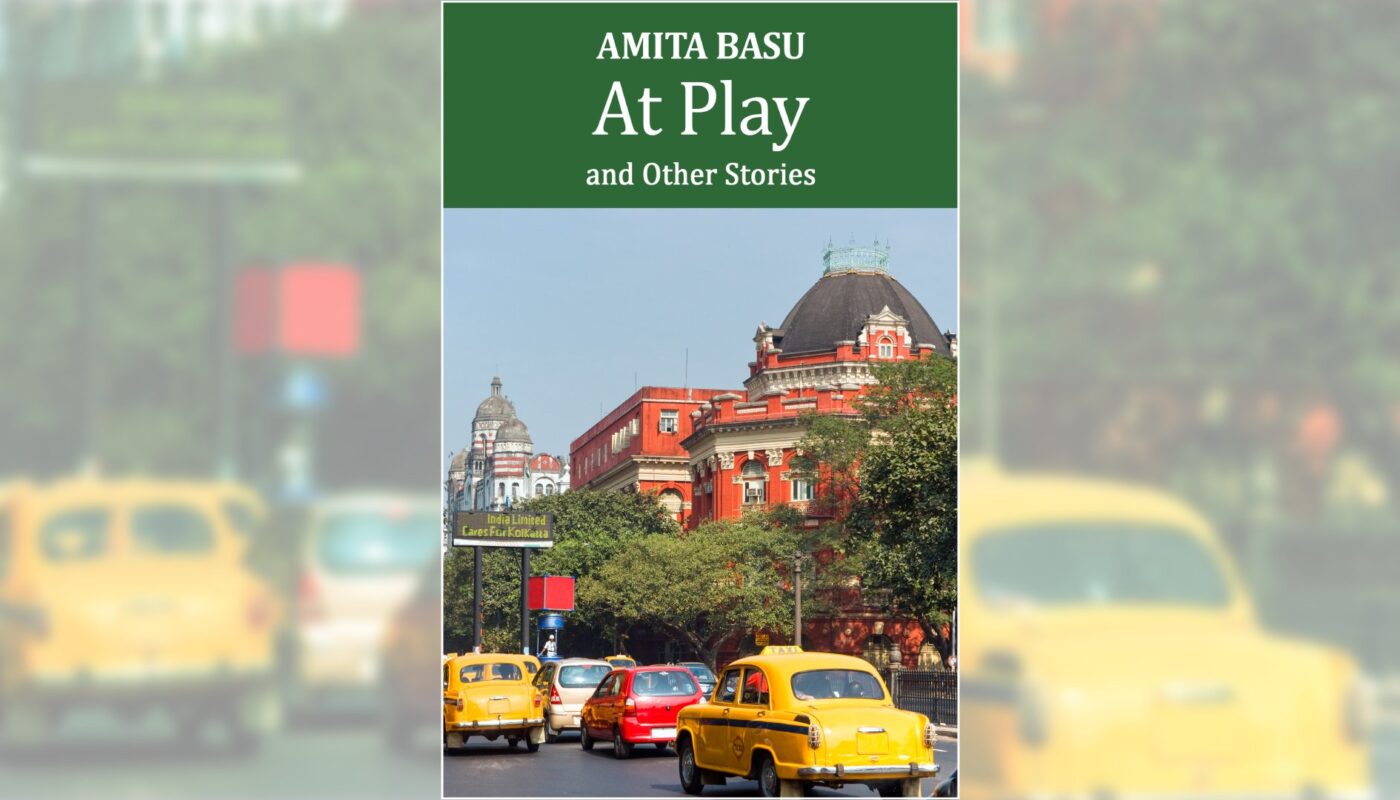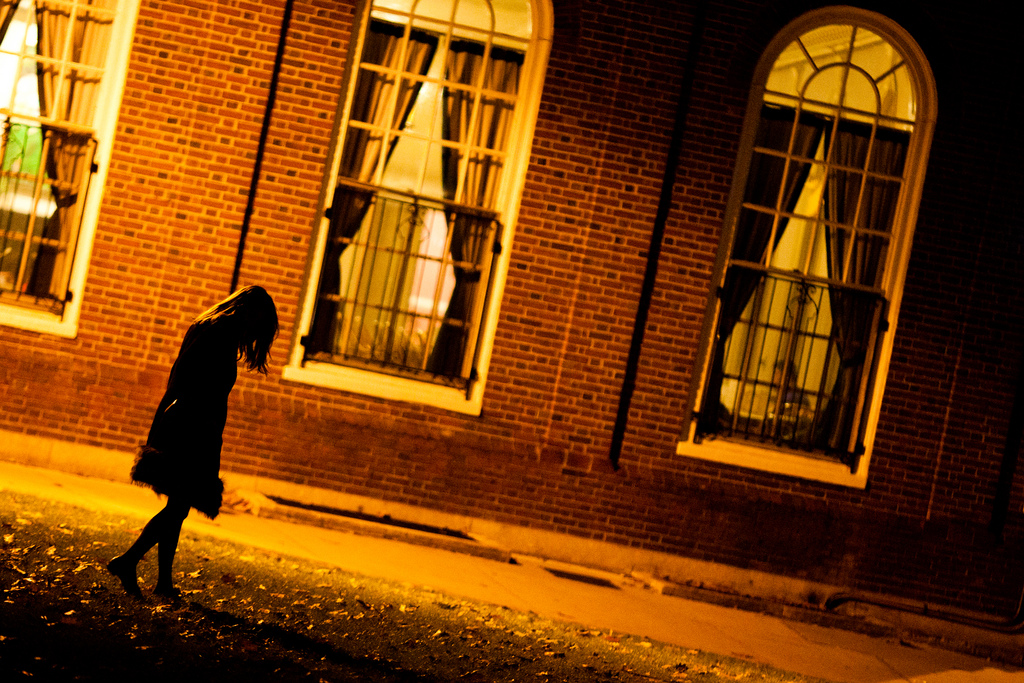[1022 words]
At Play is a collection of short stories by Amita Basu, which immediately engaged me with the fundamental humanity of its themes and ideas — most especially, in the way that the collection showcases the beauty that is the urgency of human life. Each story is fascinating in its own way, evoking in just a few pages a sprawling network of interlocking relationships, dreams, and histories. Each is utterly grounded in concrete, believable detail, painting a picture of a fully lived-in world and characters vivid enough to step off of the page.
The titular story, “At Play,” is a study in Basu’s beautiful visuals and contemplative narrative voices. Playing with themes of story and spectatorship, of performance and presentation, Basu explores a fascinating interplay of the protagonist’s deep-seated fear, or perhaps simply awareness, that she is at heart a “nasty” person, with her ambitions to become one of the “greats.” While each story in this collection has its strengths, “At Play” is certainly deserving of having its name on the cover. It’s an unceasing array of languid metaphor weaving back into concrete detail, every word etched with illuminating characterization that furthers and develops the reader’s understanding of the main character, who dreams — as many do — of being famed for her skill, while fearing that she has none at all. Ultimately, however, her main internal conflict is put on brilliant display from start to finish — despite aspiring to greatness, despite claiming to want to change, to be better, she cannot help but slip back into bad habits, bullying and manipulating others in order to, paradoxically, achieve her greatness.
I was particularly spellbound by the beautiful and mystifying “Rebirth,” wherein a woman who has shut herself off from the world — under the belief that “life is not for her” — re-learns to live, and love, by caring for the smallest and most delicate of creatures. With a piece like this, the literal and the metaphorical are blended so seamlessly that its dreamlike quality had me feeling like I was participating in that very dream.
“Rebirth” is directly followed by another standout, “All Creatures Great and Small,” detailing a scant few moments in the life of an elderly housekeeper. The genius of this story comes from its simple and intimate nature: without any grand overarching schemes or fast moving conflicts, we delve deep into the deceptively complex relationships and inner worlds of the handful of characters in the story. The narrative transitions seamlessly between points-of-view, and I adored seeing the same scene from different eyes, giving me a stunningly efficient insight into each character — the dog included!
Nestled in the first half of the collection, “Shoes” is a captivating study in the communication, or lack thereof, between generations of women: how a mother and a daughter fail to speak honestly to one another, how an aging woman refuses to learn a new language to match her family, how the differing ambitions of two coworkers never quite reach each other’s ears. These parallels form what one character calls “the adventure of waking up in love with the project of oneself” — both beautiful and heartrending, in a way that feels entirely relatable. I myself have known the feeling of being an aspiring performer, and struggling to convey my dedication to that dream to the people around me. This story excellently balances the fear of losing one’s youth, and the desire to grow up faster.
“The Why and the How” brings another interesting change in perspective, as it follows the street-weary “bitch” leader of a dog pack who fights for survival on the streets of Bangalore. The reader is treated to the mindset of a dog who has done everything necessary for survival, or at least sees the world that way. The story plays with a careful balance between hard decisions and cold justifications, best illustrated in the main character’s constant calculations of which dogs can hold their own in the pack, and which must be left out in the cold. By portraying all central characters as dogs in a human-led world, the piece acts as both an allegorical and a literal narrative, examining not only the “how,” but the “why,” of the ways that humans and dogs alike can be at once cruel and kind to themselves and to each other.
One of Basu’s primary talents lies in the thematic parallels between stories with otherwise vastly diverse elements and perspectives. “Field Trip” marries earlier themes of animal-human relationships and intergenerational relationships, following a teacher doing her best to ensure her young students are cared for as best as she can, all while shepherding the overeager, overexcited boys through a day at the zoo. Class relations are filtered through the lens of young students’ behavior: poorer children are fascinated by the animals, asking question after question, engaging with the world, while the children of the wealthy find themselves occupied only with themselves and their trinkets. The teacher’s primary struggle is conveyed perfectly in her own words: “Doing well in life won’t automatically make them good people.” I loved this idea, and the broader theme explored here. I’ve experienced some of the most touching moments of kindness from people who have little else to give — and, conversely, come face-to-face with more than a few deeply unkind rich people.
The collection closes out with “The City” — by far my favorite of the stories — a contemplative, internal narrative seamlessly winding through ideas and themes of life, death, and the mundanities of both without ever losing me. The language on display is stunningly beautiful, a stream-of-consciousness that interweaves metaphor with concrete detail to give the piece a dreamlike yet utterly grounded atmosphere — that evokes, appropriately, the strange and convoluted trains of thought that occur in periods of idleness and travel. As much as “At Play” is rightfully given space on the title page, I am delighted that “The City” was the last note with which I was left, because it wonderfully embodies Basu’s gift for using individual, street-level narratives to examine and re-examine universal human phenomena. Overall, At Play is a beautiful collection in which every story engaged me in its own unique way.
Purchase a copy of At Play here:
Publisher: Bridge House Press (paperback only)
Amazon US
Amazon UK (ebook included with Kindle Unlimited)
Amazon India
Aedan Ferrara is a writer and performer who grew up in California’s Inland Empire, caught between the High Desert and the high seas. Their work (and everything else about them) trends toward the experimental and absurd. When they’re not writing (or trying their best) they can be found baking dessert, caring for their houseplants, or moonlighting as a ghost hunter.
Amita Basu’s fiction has appeared or is forthcoming in over sixty magazines and anthologies including The Penn Review, Bamboo Ridge, Another Chicago Magazine, The Dalhousie Review, and Funicular. She is a submissions reader and review board member at Bewildering Stories, contributing editor at Fairfield Scribes Microfiction, interviews editor and sustainable living columnist at Mean Pepper Vine, and slush reader at The Metaworker. She lives in Bangalore, has a PhD in cognitive science, works in sustainable behaviour, and blogs at http://amitabasu.com/.




